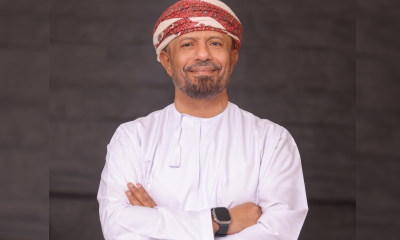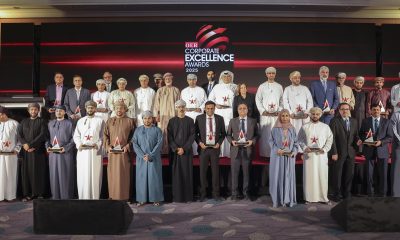Environment
Oman Launches Initiatives to Reduce Carbon Emissions

The Sultanate of Oman has stepped up its game in reducing carbon emissions to achieve the net-zero plan by 2050 through initiatives in the land, sea and air transport sectors, as well as the communications and information technology sectors.
Abdullah Ali Al Busaidi, Director General of Oman Logistics Centre at the Ministry of Transport, Communications and Information Technology and an expert at the Zero Neutrality Team, explained that there is a clear plan for land transport projects in cooperation with the public and private sectors to replace light vehicles with environmentally friendly vehicles.
He pointed to the great leap in the use of electric cars that reached 1,500 vehicles according to the latest statistics, and the number of charging points has reached 120 points in various governorates.
Hydrogen energy is the most suitable solution to reduce emissions from heavy vehicles, said Al Busaidi, who explained that there are challenges in preparing the infrastructure to provide hydrogen in appropriate quantities, but the Sultanate of Oman has currently decided to activate green lanes for trucks.

He added that emissions from the land transport sector amount to 20 per cent of total emissions in all sectors. After adding the air and sea transport sectors, they may amount to 28 per cent of total emissions, according to what was calculated by port operators and local airlines, noted Al Busaidi.
He pointed out that the targets for reducing emissions in the Sultanate of Oman were divided into three stages. In the transportation sector, the reduction rate in 2030 will reach 3 per cent of total emissions, an additional 34 per cent in 2040, and reach 100 per cent by 2050.
He affirmed that the work plans currently being carried out by the Ministry of Transport, Communications and Information Technology on heavy transport are the gradual transition to hydrogen trucks using the dual-combustion truck, as this technology was developed locally by the private sector and a 52 per cent reduction was proven.
As for the emissions of the communications and information technology sector, Al Busaidi said that these emissions are currently based on information centres and communication towers, in light of the country’s expansion in the digital economy and information technology infrastructure.
Work is underway on emissions inventory and reducing them, in a manner that makes Oman keep pace with the world’s plans in this approach.
He stated that there are also initiatives for the maritime transport sector to reduce emissions by converting the facilities used to environmentally friendly ones and converting equipment to electric ones away from fossil fuels, in light of the Sultanate of Oman’s approach to becoming a regional centre for supplying ships with clean energy.
He concluded that the Civil Aviation Authority also has initiatives in air transport, including sustainable fuel projects for aircraft.
-

 Real Estate2 months ago
Real Estate2 months agoAl Mouj Muscat Unveils Azura Beach Residences Phase 2: A New Chapter in Waterfront Living
-

 Leaders Speak1 month ago
Leaders Speak1 month agoDhofar International Development and Investment Company: Driving Sustainable Growth and Strategic Synergies in Oman’s Investment Landscape
-

 Events1 month ago
Events1 month agoOER Corporate Excellence Awards 2025 Honours Entities and Innovations in Oman
-

 Economy1 month ago
Economy1 month agoMaal Card: What Oman’s New National Payment Card Means for Everyday Users
-

 OER Magazines2 months ago
OER Magazines2 months agoOER, October 25
-

 Arts and Culture2 months ago
Arts and Culture2 months agoOminvest and Bait Al Zubair Launch “Future Frames” to Empower Youth through Art and AI
-

 Entertainment2 months ago
Entertainment2 months agoWhere Heritage Meets Haute Couture: Al Sadaa Haute Couture Transforms the Sultanate’s Fashion Scene
-

 News1 month ago
News1 month agoSheikh Suhail Bahwan, Chairman of Suhail Bahwan Group, Passes Away





























